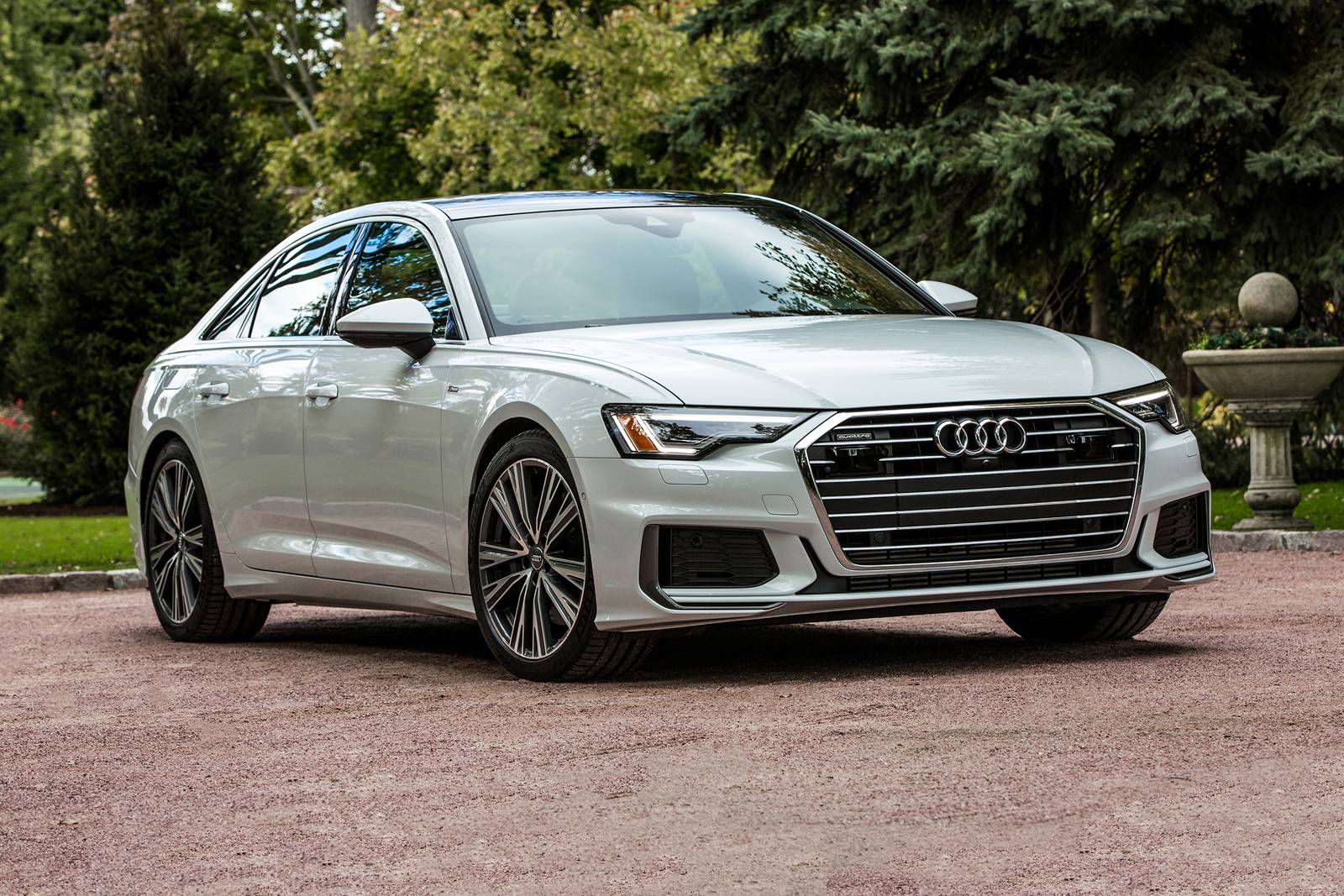Car theft is a growing concern, and while no vehicle is completely immune, some sedans are significantly better equipped to deter thieves.
Manufacturers have implemented advanced anti-theft systems, from keyless entry encryption to GPS tracking and immobilizers.
However, not all sedans are created equal some still suffer from outdated or faulty alarm systems that either trigger false alarms or fail to engage when needed.
Below is a detailed breakdown of five sedans with exceptional anti-theft protection and five that are more vulnerable due to problematic alarm systems.
Sedans With the Best Anti-Theft Systems
In today’s world, vehicle theft remains a serious concern—especially in urban areas where break-ins and carjackings are on the rise. For many drivers, security is just as important as performance, comfort, or fuel efficiency.
That’s why choosing a sedan equipped with a top-tier anti-theft system can offer peace of mind as well as protection for your investment. Automakers are stepping up their game with advanced security features like encrypted key fobs, immobilizers, GPS tracking, motion sensors, and smartphone integration.
In this article, we’re highlighting sedans that go the extra mile in theft prevention—vehicles that not only look great and drive well, but also make it significantly harder for thieves to get away with them.
Whether you’re shopping for a new car or looking to upgrade your daily driver, these are the sedans that lead the pack when it comes to smart, reliable anti-theft technology.
1. 2023 Toyota Camry
The Toyota Camry has long been one of the most reliable sedans, and its security features are no different. The latest models come with Toyota’s Smart Key System with Push Button Start, which uses rolling codes to prevent cloning.
In addition, the engine immobilizer, automatic locking, and optional Vehicle Security System (VSS) work together to provide a layered defense. Its integration with Toyota’s Safety Connect system also allows for GPS tracking in case of theft.
The Toyota Camry continues to be a cornerstone of the midsize sedan market, even as that segment sees shrinking options and waning sales due to the surge in SUV popularity. Despite the shift in consumer interest, the Camry has consistently remained the top-selling passenger car for the past twenty years.
It has built a strong reputation for reliability, and its hybrid variant delivers exceptional fuel efficiency. The current generation edges into stylish territory, especially with the available Nightshade package—which adds bronze wheels for 2023—or the aggressively styled TRD trim.
Unlike many of its competitors, including the Honda Accord and Hyundai Sonata, which have committed exclusively to four-cylinder engines, the Camry still offers an optional 301-horsepower V-6. While the Camry may not be thrilling to drive, it excels as a safe, efficient, and spacious daily driver that’s easy to live with.
For 2023, the SE trim’s optional Nightshade package introduces black trim for the headlights and taillights to match the black front grille, rear spoiler, mirror caps, and badges. This package also adds matte bronze 19-inch wheels that surprisingly suit the Camry’s overall design.
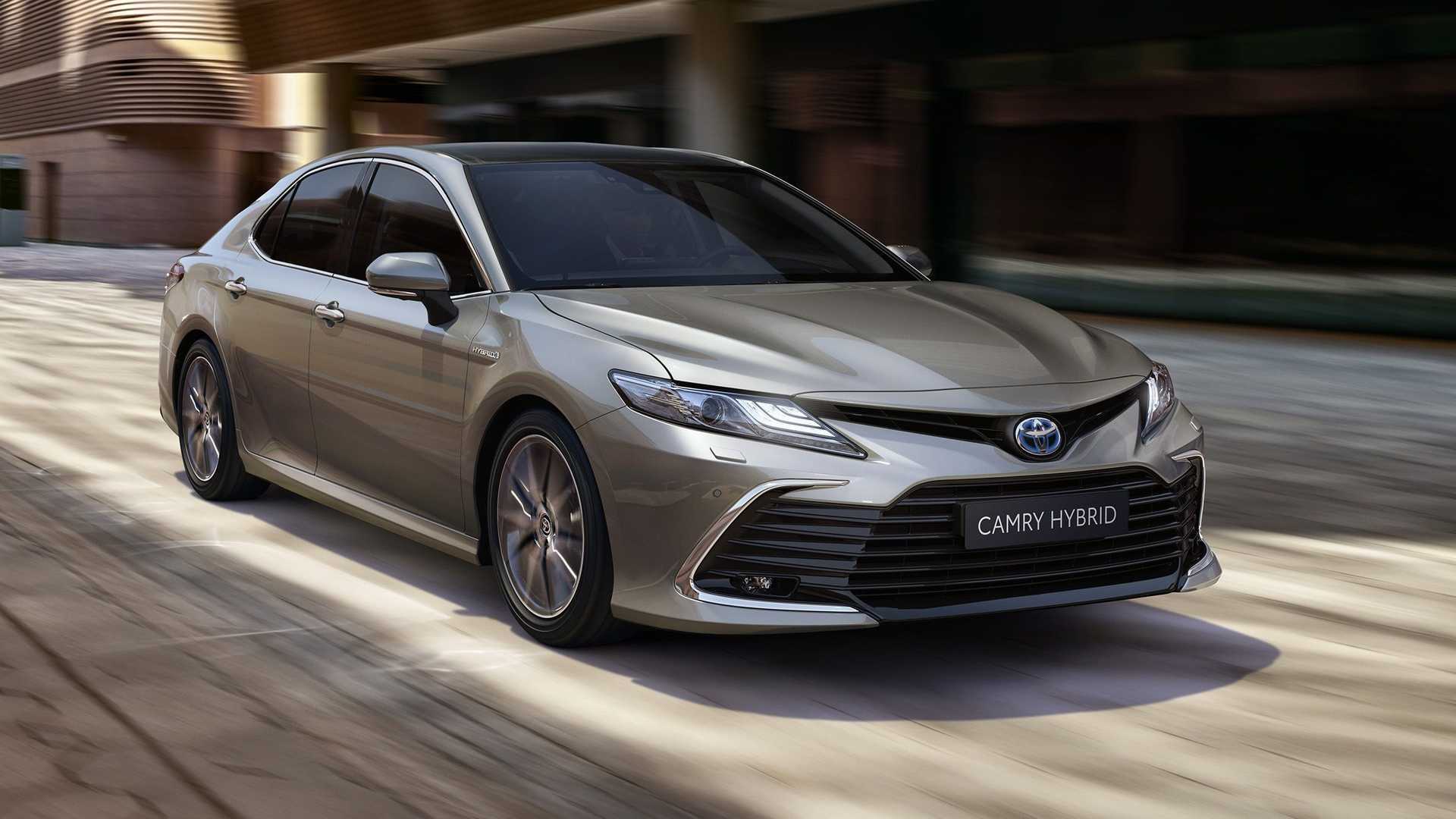
It’s available in three colors: Midnight Black, White, and a new shade called Reservoir Blue. The rest of the lineup gains additional driver-assistance features, including automatic high beams and a forward-facing camera that can detect and display certain road signs on the vehicle’s digital display.
It best represents the Camry’s strength as a relaxed, near-luxury family sedan. When driven with a light foot, it delivers excellent gas mileage, offers a comfortable ride, precise steering, and comes with an upscale, roomy interior clad in standard leather upholstery.
The Camry’s standard four-cylinder engine is mated to a smooth eight-speed automatic transmission, although acceleration is underwhelming. A less powerful version of that same engine, in combination with a battery and two electric motors, powers the Camry Hybrid.
Thankfully, the latest Camry isn’t a bore to drive like past generations. It delivers a composed ride with surprisingly nimble handling for the segment. The steering is well-weighted—firm and reassuring on winding roads, yet light and manageable for parking.
Brake feel is also confidence-inspiring. Even in the hybrid model, where braking blends traditional friction with regenerative technology that recharges the battery during deceleration, the pedal feels responsive without being too soft.
Also Read: 5 Cars That Handle Emergency Stops Well and 5 That Feel Scary
2. 2024 BMW 5 Series
BMW’s 5 Series is a tech-forward sedan that prioritizes both performance and security. It features an advanced keyless entry system with motion sensors, internal cabin monitoring, and tilt sensors that detect if the car is being towed or jacked.
BMW also includes an electronic immobilizer and their ConnectedDrive system, which allows owners to remotely track, lock, or disable the vehicle if stolen a major deterrent for thieves.
The 2024 BMW 5 Series debuts with multiple configurations, offering a range of powertrains to suit different driving preferences. In both the 530i and 530i xDrive models, BMW fits a 2.0-liter four-cylinder mild hybrid system that now produces 255 horsepower and 295 pound-feet of torque.

That marks an increase of 7 horsepower and 38 pound-feet over the outgoing version. Power is routed through an eight-speed automatic transmission. During testing, we recorded a 0-60 mph time of 5.5 seconds for the rear-wheel-drive 530i, and 5.6 seconds for the all-wheel-drive xDrive variant.
Stepping up to the BMW 540i xDrive, the performance improves significantly. This model uses a 3.0-liter turbocharged inline-six with a mild hybrid system, now producing 375 horsepower—up by 40 hp from before. BMW claims this setup enables the car to accelerate from 0 to 60 mph in just 4.5 seconds.
Topping off the lineup is the all-electric i5. The i5 eDrive40 sends 335 horsepower and 295 pound-feet of torque to the rear wheels, enabling a 0-60 mph run in 5.7 seconds.
3. 2023 Honda Accord
The Honda Accord blends practicality with top-tier security. It comes standard with an anti-theft engine immobilizer, remote keyless entry with encrypted transponder keys, and a security alarm system that triggers if someone tries to force open doors or tamper with the hood.
Its systems are also designed to reduce false alarms, giving it an edge over older generations.
The 2024 BMW 5 Series debuts with multiple configurations, offering a range of powertrains to suit different driving preferences. In both the 530i and 530i xDrive models, BMW fits a 2.0-liter four-cylinder mild hybrid system that now produces 255 horsepower and 295 pound-feet of torque.
That marks an increase of 7 horsepower and 38 pound-feet over the outgoing version. Power is routed through an eight-speed automatic transmission. During testing, we recorded a 0-60 mph time of 5.5 seconds for the rear-wheel-drive 530i, and 5.6 seconds for the all-wheel-drive xDrive variant.
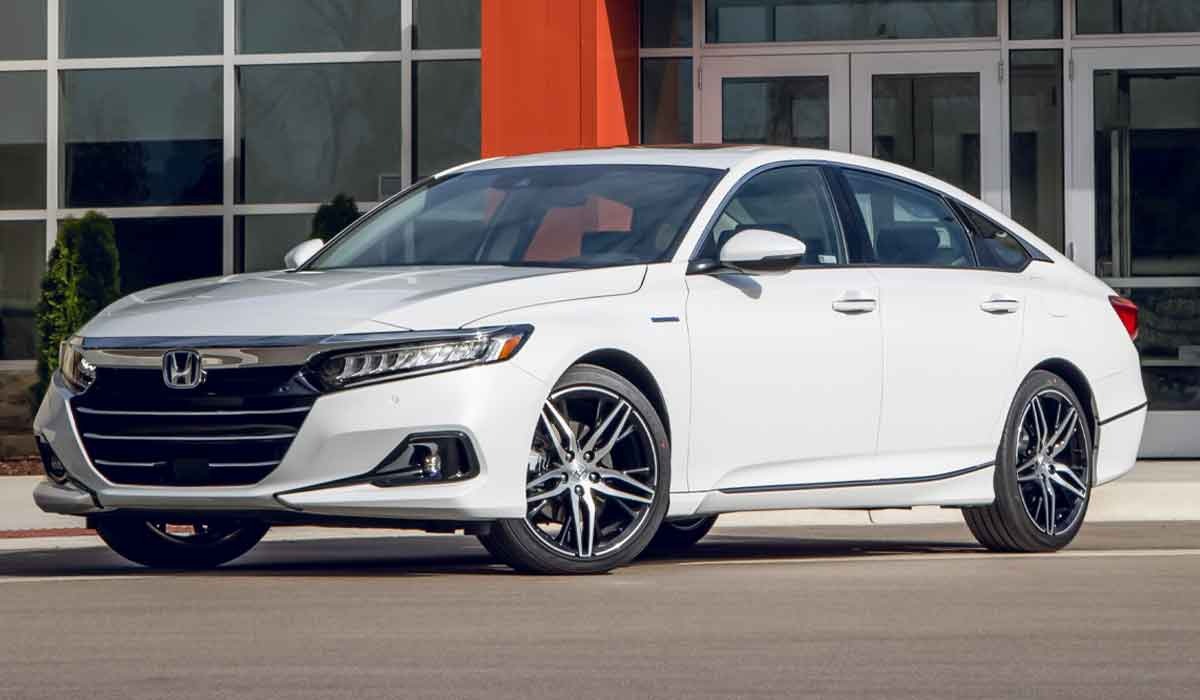
Stepping up to the BMW 540i xDrive, the performance improves significantly. This model uses a 3.0-liter turbocharged inline-six with a mild hybrid system, now producing 375 horsepower—up by 40 hp from before. BMW claims this setup enables the car to accelerate from 0 to 60 mph in just 4.5 seconds.
Topping off the lineup is the all-electric i5. The i5 eDrive40 sends 335 horsepower and 295 pound-feet of torque to the rear wheels, enabling a 0-60 mph run in 5.7 seconds. The range-topping variant is the i5 M60 xDrive, which delivers an impressive 590 horsepower and 586 pound-feet of torque. That’s enough to rocket from 0 to 60 mph in only 3.7 seconds.
According to BMW, the i5 eDrive40 is capable of traveling an estimated 295 miles on a full charge, while the high-performance M60 xDrive achieves a range of 256 miles. In our first drive of the i5 prototype, we praised both versions for their smooth and intuitive electric braking system.
4. 2024 Audi A6
Audi’s A6 boasts a sophisticated security suite as part of its luxury appeal. In addition to an alarm system with interior motion detection, the A6 features secondary verification protocols and an electronically encrypted key fob.
Audi’s MMI system integrates with GPS-based vehicle tracking and allows the owner to receive alerts if the car is moved or tampered with.
While some luxury sedans lean heavily into performance and others prioritize a comfort-first approach, the Audi A6 strikes a compelling balance between the two.
It manages to offer a composed, smooth ride while still delivering a sense of driver engagement, all wrapped in a modern, sleek design. Although it’s not Audi’s flagship electric sedan of tomorrow, the A6 certainly doesn’t feel outdated.
No matter which powertrain you select, the A6 moves with poise and confidence, largely thanks to its well-calibrated chassis and standard all-wheel drive. Inside, the A6 showcases top-tier craftsmanship and premium materials throughout.
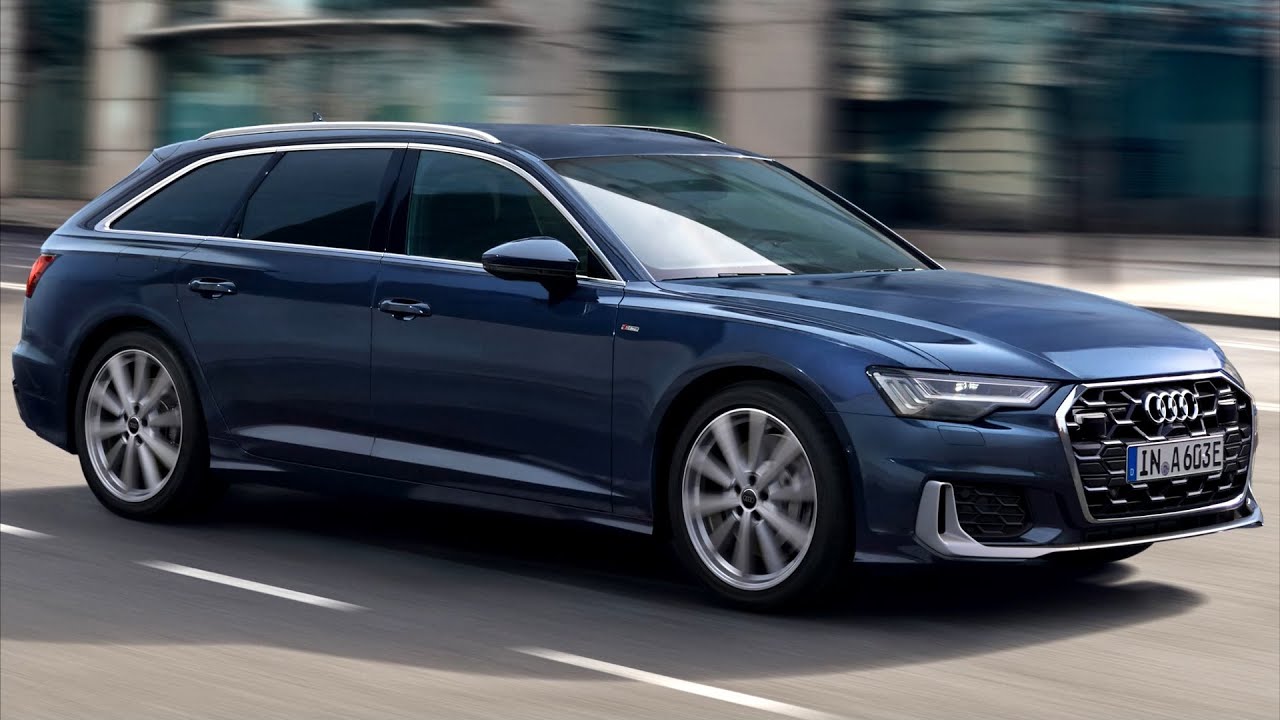
The digital interface is visually striking, but many of the basic functions rely too heavily on touch-based controls, which can hinder ease of use.
Additionally, it’s disappointing that the entry-level trims lack common driver-assistance features, and even when equipped, the usability of those systems isn’t always impressive.
As a conventional sedan, the A6 is refined and dependable, if somewhat conservative. Thankfully, Audi adds some flavor to the lineup with performance-minded alternatives like the A6 Allroad and RS6 Avant wagons—both of which are practical, engaging to drive, and far from ordinary.
The highly anticipated Audi A6 E-Tron may be the brand’s future, but for now, the current A6 stands strong as a leading contender in the midsize luxury sedan category.
Also Read: Top 10 EV Features That Come in Useful in Daily Commute
5. 2023 Lexus ES
Lexus continues to earn high marks for reliability and safety, and the ES is no exception.
Its SmartAccess key system, coupled with an engine immobilizer and optional security alarm, makes it extremely tough to steal.
The car also supports Lexus Enform Remote, letting owners monitor and control the vehicle from their smartphone a crucial feature if the car is accessed without permission.
For many drivers, the 2023 Lexus ES will represent an ideal upscale daily driver. It offers plush seating and leather that feels genuinely premium. The cabin is spacious, the trunk is generously sized, and the overall ride quality is refined and luxurious, particularly during relaxed cruising.
One welcome improvement inside is the elimination of the remote touchpad, which makes interacting with the infotainment system easier and less frustrating.
However, don’t expect this to be a sport sedan. The ES only feels quick when equipped with the V-6 engine, and when pushed hard, its handling reveals the heft of the car.
Opting for an F Sport trim does bring more control to body motions, but the steering lacks the feedback and precision you’ll find in German competitors. Braking is merely average on gas-only models, and in the hybrid version, it doesn’t meet expectations—especially considering the segment.
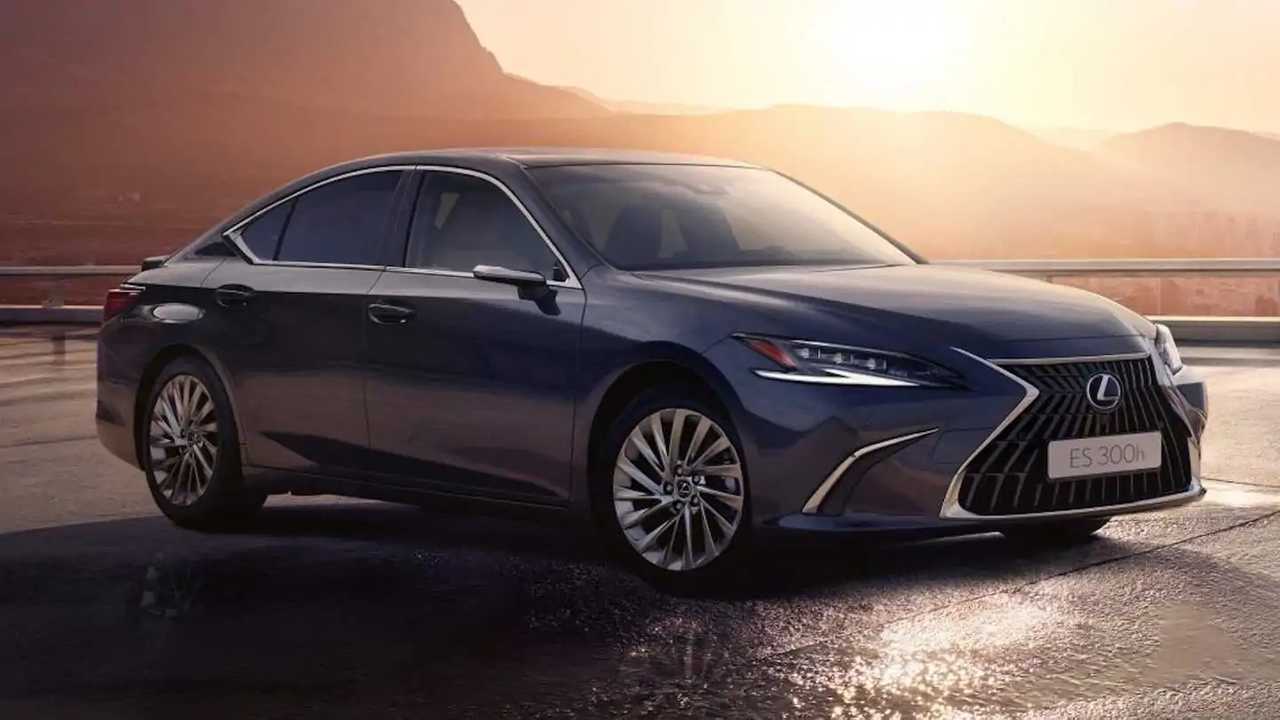
The 2023 ES excels as a comfortable city cruiser, but for those who crave a little more excitement from their luxury sedan, alternatives like the Genesis G80 Sport or Mercedes-Benz E450 may be more satisfying.
The 2023 ES lineup continues to offer three powertrains. The ES250 comes with a 203-hp 2.5-liter naturally aspirated inline-four paired to an eight-speed automatic and all-wheel drive. For the 2022 model, this setup earned ratings of 25/34 mpg city/highway, making it the most efficient gas-only variant—and similar fuel economy is expected for 2023.
Those wanting more power can turn to the ES350, which runs a 302-hp 3.5-liter naturally aspirated V-6, also mated to an eight-speed automatic but with front-wheel drive. It posted 22/32 mpg city/highway last year.
Rounding out the lineup is the ES300h hybrid, which provides the best fuel economy of the bunch. The previous model was rated at 43/44 mpg city/highway.
This version pairs a 2.5-liter naturally aspirated inline-four with an electric motor and CVT automatic, delivering a combined 215 horsepower and driving the front wheels. While the ES350 offers superior performance, the ES300h is a compelling choice for those prioritizing fuel savings—provided you can live with the less-than-ideal brake feel at the end of pedal travel.
Sedans With Alarm Issues
Car alarms are supposed to offer peace of mind—but when they start causing problems instead of preventing them, it’s a different story. From overly sensitive sensors to faulty wiring and software glitches, certain sedans have developed reputations for having more alarm drama than actual theft deterrence.
Whether it’s your alarm going off randomly in the middle of the night or not triggering at all when it should, these issues can be more than just annoying—they can affect your daily life, your battery, and even your sense of security.
In this article, we’ll take a close look at the sedans that are most commonly reported to have alarm system problems, what’s behind the malfunctions, and what you can do if your car is one of them.
1. 2011-2016 Hyundai Elantra
These older Elantra models are known for having minimal theft deterrents and a basic alarm system prone to malfunction.
Worse still, some don’t have immobilizers a vulnerability widely exploited during the “Kia Boyz” theft wave. Even when equipped, the factory alarm is notorious for random false alarms and inconsistent performance.
That moment came for the Hyundai Elantra with its full redesign for the 2011 model year. Like Cinderella leaving behind her tattered clothes, the Elantra ditched its bland, uninspired exterior that had long kept it in the shadows of more eye-catching rivals. Its new, sophisticated styling might not be a shimmering gown, but it certainly grabs attention in a way the old model never did.
Thankfully, the redesigned Elantra isn’t just about aesthetics. Underneath its sleeker skin, it packs a new 1.8-liter four-cylinder engine paired with either a six-speed manual or automatic transmission.
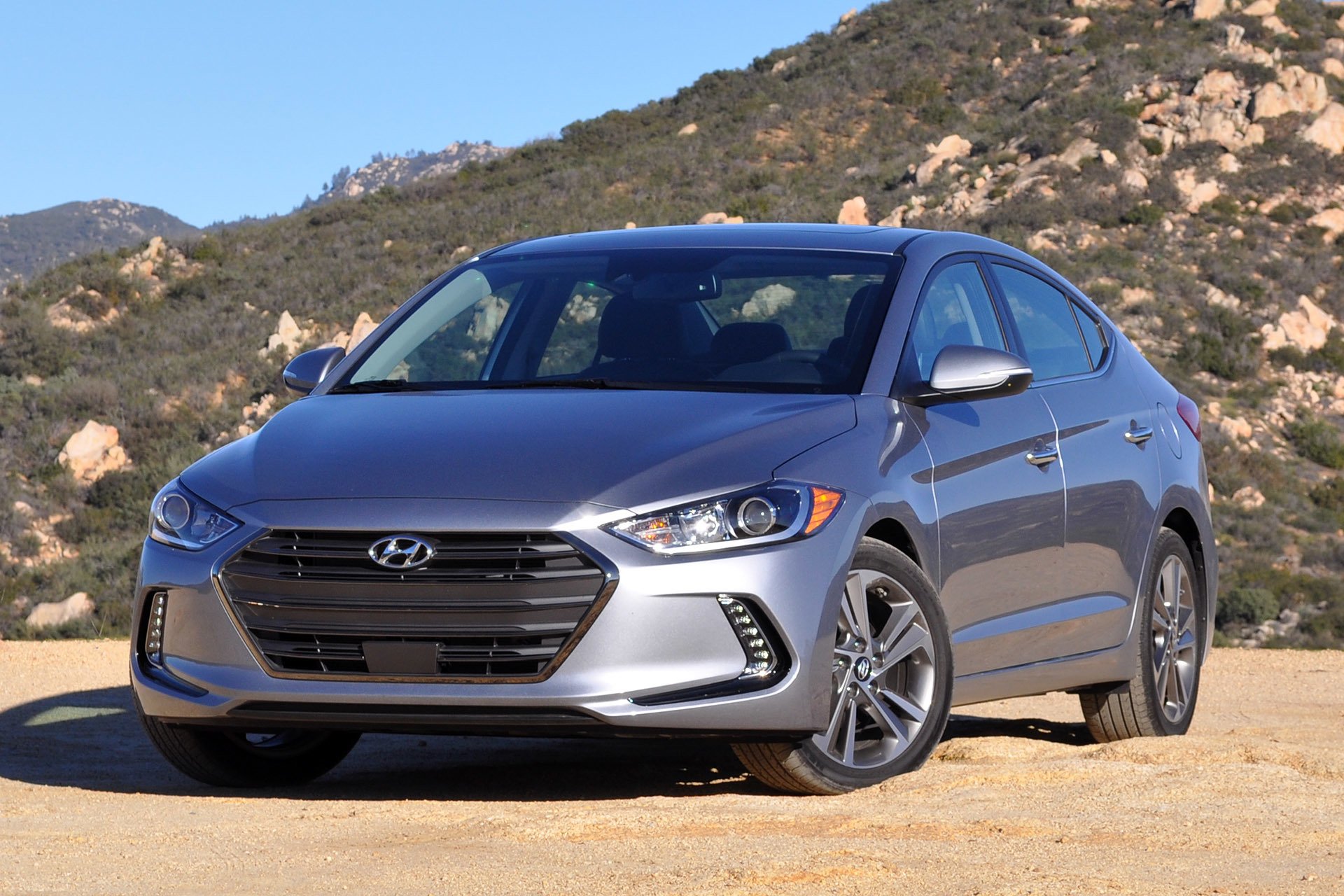
And unlike competitors like the Chevrolet Cruze Eco or Volkswagen Jetta TDI—which make buyers pay extra for high-efficiency variants—every version of this Elantra delivers strong fuel economy, hitting an impressive EPA-rated 40 mpg on the highway.
Technically still a compact sedan, the 2011 Elantra has grown enough in interior space that the EPA now classifies it as a midsize car. That’s a bonus for passengers—although rear seat headroom is tighter than in some rivals.
Even so, the cabin can be packed with features that some true midsize sedans don’t offer: think keyless ignition and entry, a rearview camera, and heated rear seats—options practically unheard of in the compact class at the time.
2. 2012-2017 Kia Optima
Kia Optimas from this era often lack robust anti-theft technology. Many trims don’t include an engine immobilizer or advanced sensors, and the alarm system frequently fails to activate properly.
The car’s vulnerability has made it a target in urban areas where organized car theft rings look for easy marks. Following a complete redesign the previous year, the 2017 Kia Optima sees only a handful of updates. Notably, the SX and SXL trims now come equipped with upgraded LED headlights, replacing the previous xenon units.
Additionally, Kia introduces new option packages for several trims, including the Driver Convenience package for the LX and the Premium Plus package for the EX.

While sedans continue to lose ground to the ever-popular crossover segment, the 2017 Kia Optima stands as a reminder that there’s still strong appeal in a well-executed midsize four-door.
The updates for this model year may be relatively minor given the extensive changes made during the full redesign in 2016, but the lineup has expanded with new packages that give buyers more flexibility to tailor the car to their needs.
Combine that with the Optima’s ongoing strengths—its solid value, spacious interior, and large trunk—and it remains a serious contender against top rivals like the Honda Accord and Ford Fusion.
3. 2008-2013 Nissan Altima
While newer Altima models are more secure, these older generations suffer from overly sensitive alarm sensors, causing many false alarms over minor vibrations or passing traffic.
At the same time, experienced thieves have found ways to bypass the security system altogether due to the outdated encryption on the key fob system.
Since its 2002 revival, the Nissan Altima has consistently ranked as a popular choice for buyers seeking a sporty family sedan. The previous generation gained a reputation for its agile handling and strong performance, though it was also criticized for a low-rent interior and intrusive road noise.
With the Altima’s redesign last year, Nissan aimed to preserve its fun-to-drive nature while addressing its weaknesses. The result was a dramatically improved five-passenger sedan that offered both enhanced comfort and engaging dynamics—an ideal option for drivers looking for more than just a practical commuter.
For 2008, the Altima lineup expands with the introduction of an all-new coupe model. Far from being just a sedan with two fewer doors, the Altima Coupe brings unique styling, sharing only the hood with the sedan.
It features a shorter wheelbase and overall length, along with a revised suspension tuned for sharper handling. In both looks and driving dynamics, it’s reminiscent of a scaled-down Infiniti G37.
Both sedan and coupe variants are available with an extensive selection of luxury and tech features. However, these features are bundled into expensive option packages that require stacking other packages just to access certain items.
For example, adding satellite radio to a 2.5 S Sedan requires purchasing the $1,200 Connection Package, which can only be had with the $500 CVT. That, in turn, must be combined with the $3,850 2.5 SL package and $300 for antilock brakes.
The Technology Package on the 3.5 SE rings in at a steep $6,400. If your goal is to keep costs down, you might be tempted to go easy on options, but Nissan makes that nearly impossible. It’s like walking into a salad bar and having to choose between plain lettuce or a five-gallon tub of Ranch dressing.
Despite the convoluted packaging strategy, the 2008 Nissan Altima builds on its strengths, becoming an even more appealing option in the fiercely competitive midsize segment. The new coupe takes on rivals like the 2008 Honda Accord coupe, offering a compelling mix of sportiness and everyday usability that few other midsize two-doors can match.
Meanwhile, the sedan remains a strong contender, particularly for those wanting sporty performance in a practical, family-friendly package. Regardless of the body style, the Altima deserves serious consideration near the top of any midsize car shopper’s list.
The 2008 Nissan Altima is offered with two engine options: a 2.5-liter inline-four producing 175 horsepower and 180 lb-ft of torque for 2.5 trims, and a 3.5-liter V6 delivering 270 horsepower and 258 lb-ft for 3.5 trims.
Most models come standard with a six-speed manual transmission, while a continuously variable transmission (CVT) is standard on the 3.5 SL Sedan and optional across the rest of the lineup, excluding the base sedan.
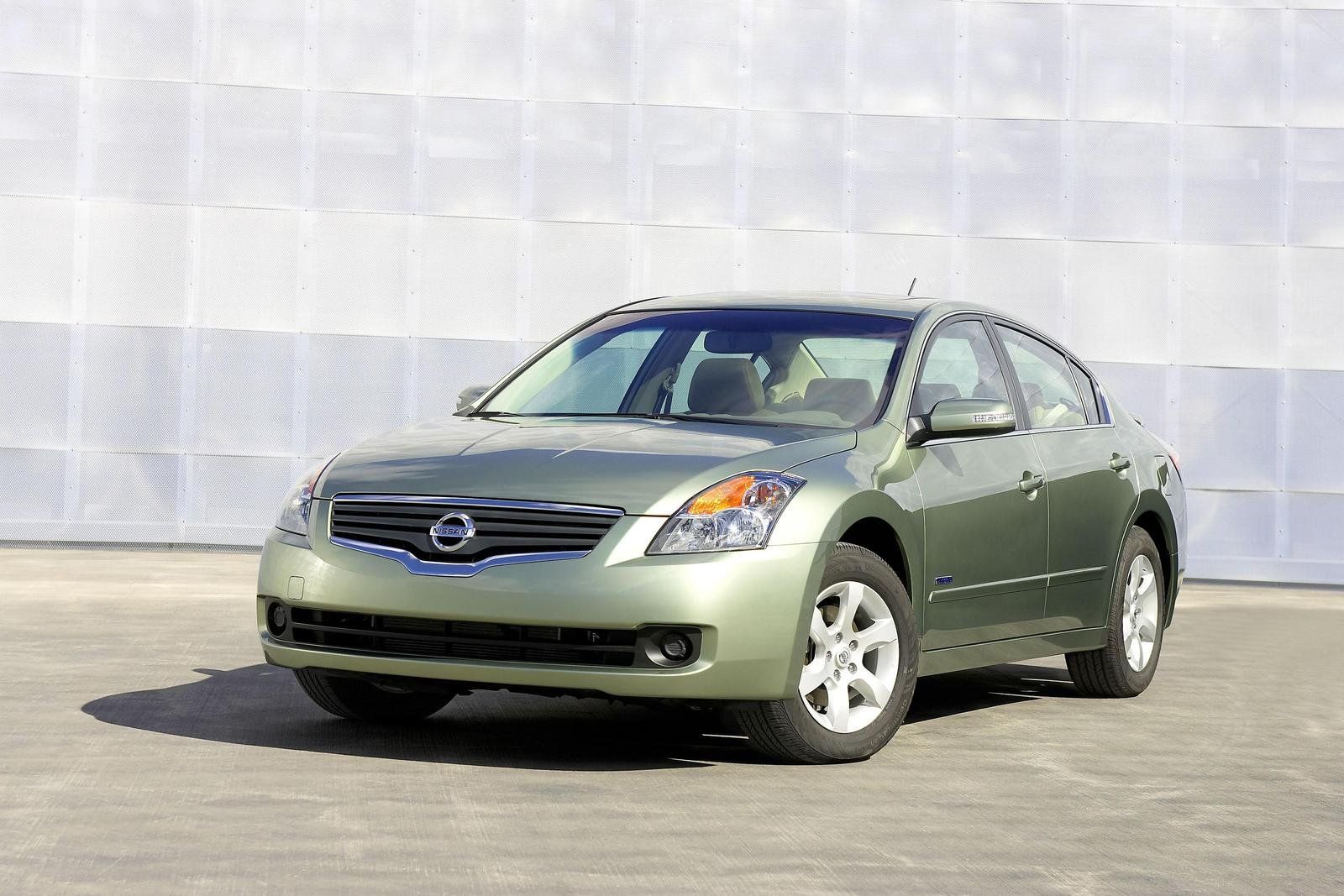
The four-cylinder offers adequate acceleration for most drivers, achieving 0–60 mph in the mid-seven-second range. In performance testing, a 3.5 SE Sedan with the CVT hit 60 mph in just 6.6 seconds, while the six-speed manual coupe did it even quicker at 6.2 seconds.
Fuel efficiency is impressive given the performance: four-cylinder sedans with the CVT earn EPA ratings of 23 mpg city and 31 mpg highway. V6 models with the CVT come in at 19/27 mpg. Fuel economy for manual versions is almost identical.
Standard on all 2008 Altimas are front-seat side airbags and full-length curtain airbags. Antilock brakes are included on all 3.5 trims and coupes, but are optional on the 2.5 S Sedan.
Only the 3.5 models offer traction control (standard) and stability control (optional). In government crash testing conducted by the NHTSA, the Altima sedan earned top five-star ratings for frontal and side-impact protection.
Thanks to its sport-tuned suspension—particularly in the coupe and 3.5 SE sedan trims—and quick steering, the 2008 Nissan Altima is among the most engaging midsize sedans and coupes to drive. Ride quality remains comfortable across the lineup, and both wind and road noise are well-managed.
The V6 models deliver strong, satisfying acceleration, while the four-cylinder models are more than adequate for everyday driving. Although a six-speed manual is available, its clutch engagement is abrupt and the shifter feels vague, lacking precision—comparable to the build quality of a cheap knockoff watch.
Unusually, we’d recommend the CVT instead. It’s one of the best we’ve experienced, offering excellent responsiveness and making the most of either engine’s output.
Braking performance is an area where the Altima falls short. While pedal feel is smooth and predictable, testing has shown braking distances from 60 mph ranging between 126 and 134 feet—only average for this segment.
4. 2007-2012 Chevrolet Malibu
This generation of the Malibu often features faulty factory alarm systems and suffers from malfunctioning hood and door sensors.
Owners have reported frequent false alarms or, worse, the alarm not going off during actual theft attempts. Additionally, the lack of a modern immobilizer in base trims reduces theft resistance.
The Chevrolet Malibu originally debuted as a premium trim level of the rear-wheel-drive Chevelle midsize car, produced from 1964 to 1978.
It was available in multiple body styles, including a four-door sedan, convertible, wagon, and two-door coupe. Throughout much of its production run, Chevrolet also offered performance-focused SS versions. From 1978 to 1983, the Malibu name officially replaced Chevelle until production ceased.
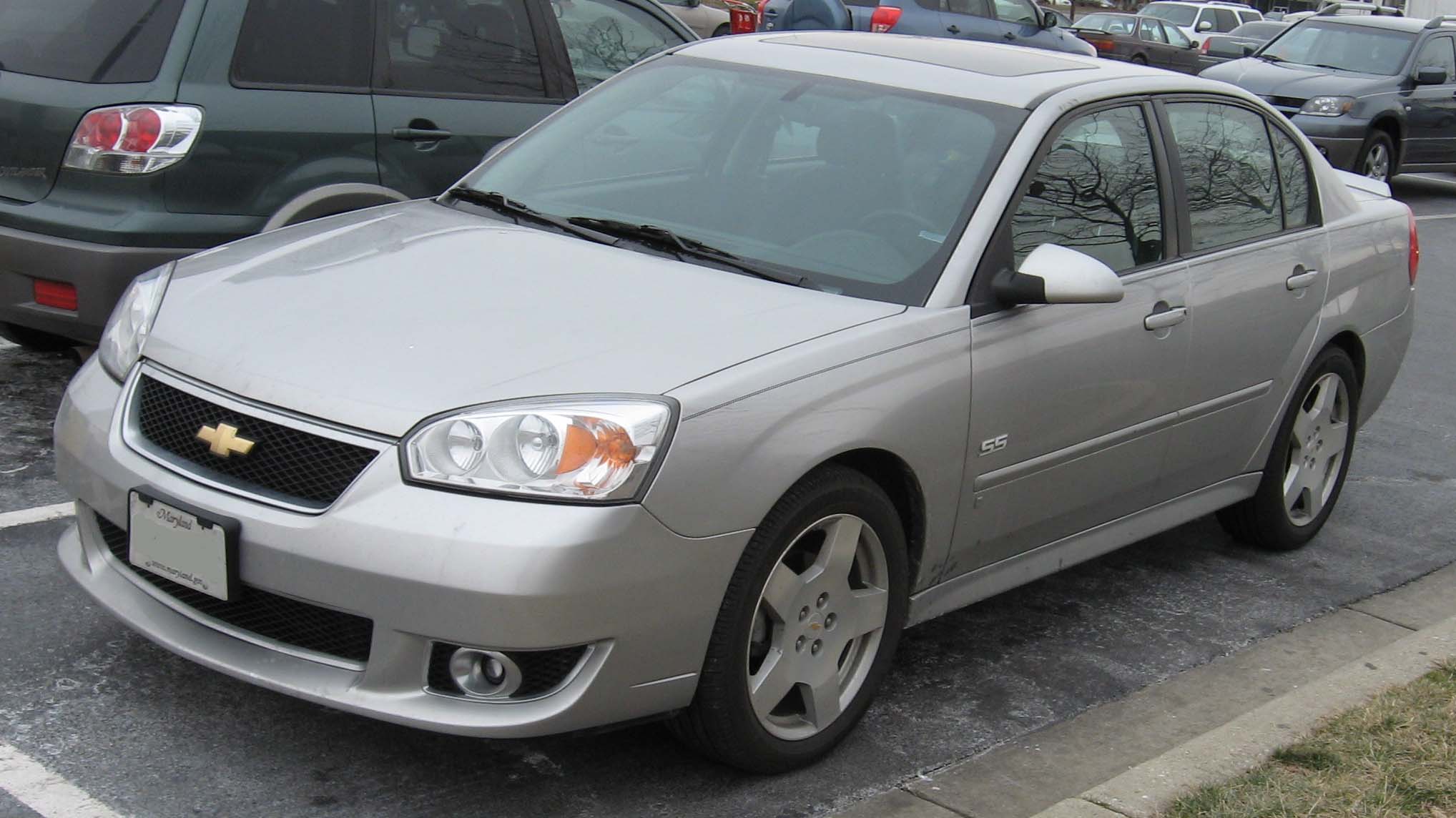
In 1997, the Chevrolet Malibu made its return as a midsize sedan positioned to compete directly with segment leaders like the Toyota Camry. To suit this market, it adopted a transverse engine layout and sent power to the front wheels.
It was offered with both four- and six-cylinder engines, each paired exclusively with a four-speed automatic transmission. Chevrolet launched the sixth-generation Malibu in 2004, adding a four-door hatchback version called the Malibu Maxx alongside the traditional sedan.
A performance-oriented SS trim was produced from 2006 to 2007, powered by a 240-horsepower 3.9-liter V6 engine mated to a four-speed automatic. The Malibu SS stood out with a sport-tuned suspension featuring a strut tower brace, a three-spoke steering wheel, and 18-inch alloy wheels.
When the 2008 Chevrolet Malibu arrived, it introduced the model’s first mild hybrid option. Initially, it came with a four-speed automatic transmission, which was later replaced by a six-speed unit.
The eighth-generation Malibu followed in 2012, with the eAssist mild hybrid variant being the first version offered to the public. Unlike its predecessors, this generation dropped the available V6 in favor of a 2.0-liter turbocharged four-cylinder engine.
5. 2014-2018 Ford Fusion
While generally a reliable car, some Ford Fusion models are plagued by alarm glitches, especially involving door latch sensors.
Drivers report issues with the alarm going off randomly in the middle of the night or failing to arm/disarm properly. This inconsistency has led some owners to disable the alarm system altogether, increasing theft risk.
When it underwent a redesign last year, the Ford Fusion quickly became a favorite among midsize sedan buyers, thanks to its attractive design, spacious interior, and engaging driving dynamics. With the 2014 Ford Fusion, those strengths carry over, along with the introduction of a new engine and a handful of updated luxury and safety features.
The 2014 Fusion offers a wide range of powertrain options. Entry-level models come equipped with a naturally aspirated 2.5-liter four-cylinder engine, while those seeking more performance or efficiency can choose from three available turbocharged engines.
A newly added 1.5-liter turbocharged four-cylinder joins the previously available 1.6-liter turbo-4, and these two engines lead the Fusion lineup in terms of fuel efficiency.
Although there’s no V6 option, the Fusion does offer a robust 240-horsepower 2.0-liter turbocharged engine, which delivers a solid combined fuel economy rating of 26 mpg. This engine can also be paired with all-wheel drive, making the Fusion one of the rare midsize sedans to provide this added level of traction.

One of the standout qualities of the Fusion is its suite of advanced convenience and safety technologies. Key highlights include adaptive cruise control, a blind-spot monitoring system, the Sync voice command interface, and an automatic parking assist that takes care of parallel parking for you.
The car also features the latest version of MyFord Touch, a customizable touchscreen interface that manages many of the vehicle’s electronic functions. While it’s a cutting-edge idea, in practice we’ve found MyFord Touch to be somewhat frustrating and distracting to operate.
That said, this remains our primary criticism of the Fusion. On the whole, its sophisticated appearance, competitive fuel economy, and well-rounded feature set position it as one of the top contenders in the 2014 midsize sedan segment.
Familiar competitors include the Honda Accord, Kia Optima, Mazda 6, Nissan Altima, Toyota Camry, and Volkswagen Passat. While each of these models has its strengths, the 2014 Ford Fusion is an excellent option for buyers who prioritize a blend of driving enjoyment, upscale tech features, and eye-catching design in their family sedan.
The security of your sedan isn’t something to overlook. While models like the BMW 5 Series and Toyota Camry offer cutting-edge anti-theft systems with minimal false alarms, others like the Hyundai Elantra and Ford Fusion may leave your vehicle vulnerable.
When shopping for a sedan, it pays to consider not just performance and fuel economy but also how well it can protect itself when you’re not around.

